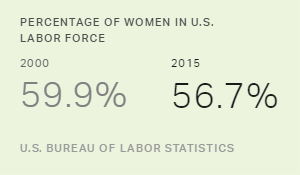"Leave your personal life at home when you come to work" might sound sensible, but it is totally unrealistic advice. Recent Gallup analysis shows that your well-being has an impact on the people you work with and on the people who work for you.
Emotion travels over social networks in much the same way viruses do.
Jim Harter, Ph.D., Gallup's chief scientist of workplace management and well-being, and Sangeeta Agrawal, a Gallup research manager, found clear connections in well-being levels among team members and between managers and those they manage. The study included 105 teams and 1,740 individuals whose well-being was measured in three six-month intervals. The average team size was 22 members, and the minimum team size was five members.
First, Harter and Agrawal found that well-being levels among team members were significantly connected to and dependent on the well-being of others on the team. The well-being connection within teams was significantly stronger than it was among employees who were not members of the same team.
Others have seen this kind of connection as well. Additional research, notably that of Nicholas Christakis, M.D., Ph.D., M.P.H., and James Fowler, Ph.D., shows that emotion travels over social networks in much the same way viruses do. "Based on this previous research, we expected to see that the well-being connection within teams would be much stronger than that among employees who were not members of the same team," Harter says. "But the surprising finding was that the relationship between supervisors' well-being and that of their direct reports grew substantially over time."
Supervisors and direct reports appear to have a mutual influence on each other's well-being, and this influence increases with time. Direct reports of supervisors with thriving well-being were 15% more likely to be thriving six months later.
Individuals with thriving well-being in the study's first measurement period were 20% more likely to have thriving team members six months later. "This relationship is largely reciprocal," Agrawal says, "meaning that individuals are likely influenced by the shared culture of their team and that individuals also appear to be influencers of their team's collective well-being."
The study points toward other areas to explore in the future. "These findings hint that a certain level of trust needs to be built before the well-being of supervisors can rub off on their team, whereas peers can have immediate influence," Harter says. "But we need to study this in more depth in larger samples in the future."
"There is plenty of evidence that well-being is shared within existing formal and informal networks and that it spreads based on social ties," Harter continues. So it may be that people with high levels of well-being are good role models for others. A manager who cares about her health, for instance, may be more likely to encourage her employees to exercise or get checkups, if only by example.
And that's an important finding. Insurance costs businesses a substantial amount of money. And so do absences, turnover, and low productivity. All those problems can be directly or indirectly associated with low worker well-being. "But high productivity, worker loyalty, and low healthcare costs also can be associated with high well-being," Agrawal says.
That alone is an incentive for companies to concern themselves with workers' well-being. And now that we know well-being is transmittable, businesses have an incentive to improve it.
The Five Essential Elements of Well-BeingFor more than 50 years, Gallup scientists have been exploring the demands of a life well-lived. More recently, in partnership with leading economists, psychologists, and other acclaimed scientists, Gallup has uncovered the common elements of well-being that transcend countries and cultures. This research revealed the universal elements of well-being that differentiate a thriving life from one spent suffering. They represent five broad categories that are essential to most people:
|
